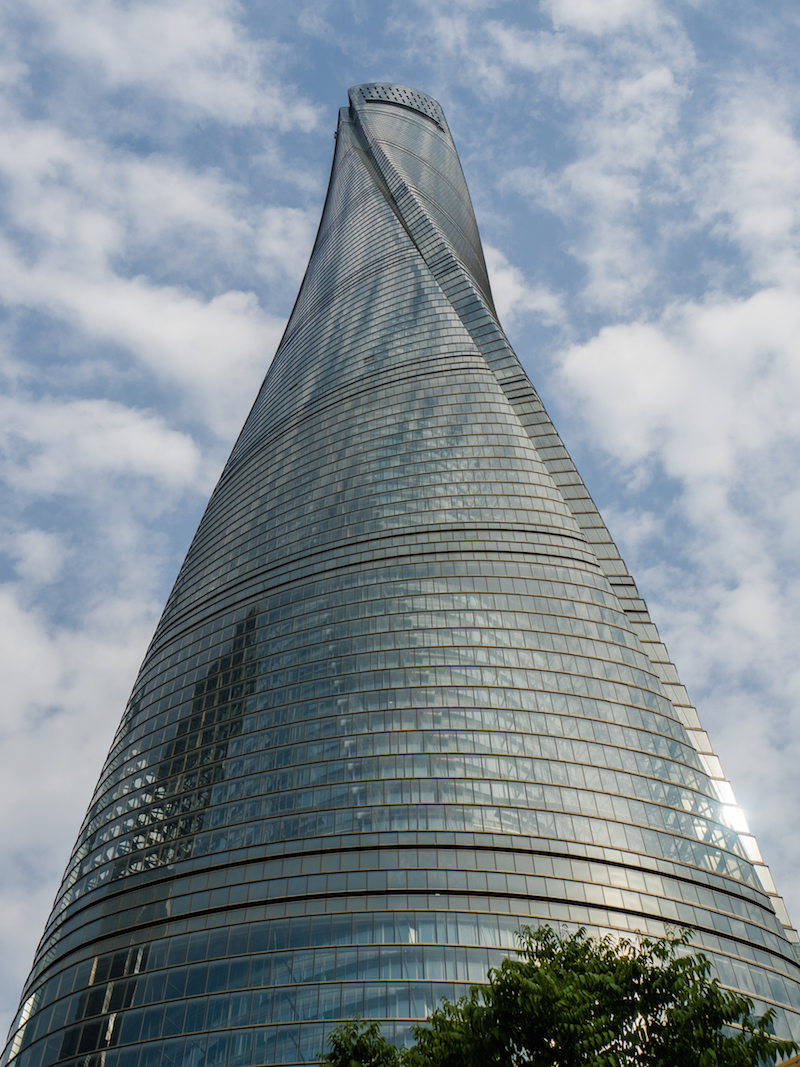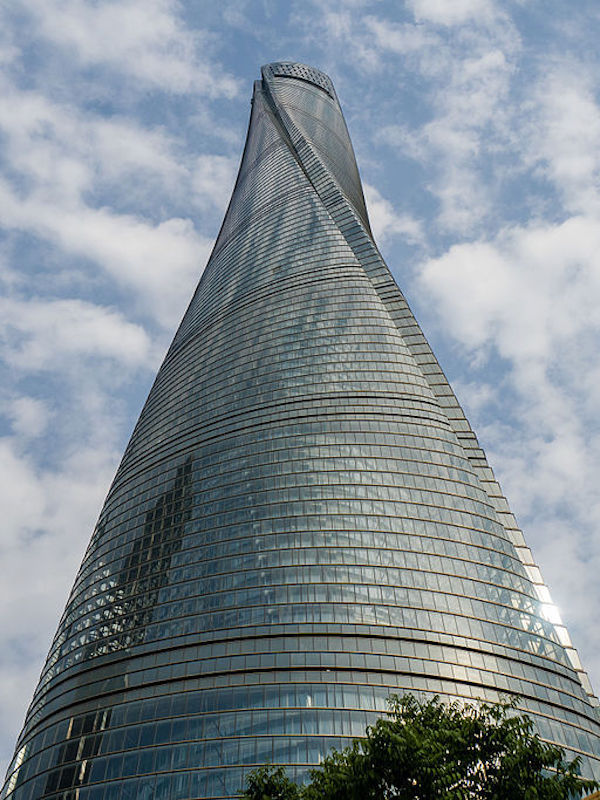The recently completed Gensler-designed Shanghai Tower in China, at 2,073 feet, lays claim to being the world’s second-tallest building, behind the 2,717-foot-tall Burj Khalifa in Dubai, according to the Council on Tall Buildings and Urban Habitat (CTBUH).
The completion of the $2.4 billion Shanghai Tower also bumps from the ranks of the 10 tallest buildings the 1,451-foot-tall Willis Tower in Chicago, which had been a mainstay on that list for more than four decades.
The twisty-shaped Shanghai Tower, with 121 stories above ground and five beneath, and a total area of 538,000 square meters, is one of three supertall buildings—the others being the Jim Mao Tower and the Shanghai World Financial Center—in the Lujiazui neighborhood in the Pudong commercial district.
Its podium features 50,000 sf of floor area for retail, as well as 19,000 sf that can be divided into three separate rooms for large-scale events, according to Gensler’s website.
The building took six years to complete, and required 1,079 concrete and steel piles to be driven into the ground for support, according to gizmag.com To get to the building’s highest point, occupants can use one of 106 Mitsubishi-desiged elevators that travel up to 40 miles per hour.
Shanghai Tower’s position among the world’s tallest buildings, however, could be shortlived, as the 3,303-foot-tall Jeddah Tower in Saudi Arabia is scheduled to open in 2020. Both the Jeddah Tower and Burj Khalifa were designed by Adrian Smith.
 Photo: Ermell via Wikimedia Commons
Photo: Ermell via Wikimedia Commons
Related Stories
| Jan 30, 2014
See how architects at NBBJ are using computational design to calculate the best views on projects [video]
In an ideal world, every office employee would have a beautiful view from his or her desk. While no one can make that happen in real life, computational design can help architects maximize views from every angle.
| Jan 29, 2014
Richard Meier unveils 'urban courtyard' scheme for Mexico City towers
A grand atrium, reaching some 30 stories, highlights the contemporary, bright-white design scheme unveiled this week by Richard Meier & Partners for a new mixed-use development in Mexico City.
| Jan 28, 2014
2014 predictions for skyscraper construction: More twisting towers, mega-tall projects, and 'superslim' designs
Experts from the Council on Tall Buildings and Urban Habitat release their 2014 construction forecast for the worldwide high-rise industry.
| Jan 23, 2014
Adrian Smith + Gordon Gill-designed Federation of Korean Industries tower opens in Seoul [slideshow]
The 50-story tower features a unique, angled building-integrated photovoltaic (BIPV) exterior designed to maximize the amount of energy collected.
| Jan 21, 2014
Comcast to build second Philadelphia skyscraper, with Norman Foster-designed tower [slideshow]
The British architect last week unveiled his scheme for the $1.2 billion, 59-story Comcast Innovation and Technology Center, planned adjacent to the Comcast Center.
| Jan 21, 2014
2013: The year of the super-tall skyscraper
Last year was the second-busiest ever in terms of 200-meter-plus building completions, with 73 towers, according to a report by the Council on Tall Buildings and Urban Habitat.
| Jan 3, 2014
World’s tallest vegetated façade to sprout in Sri Lanka [slideshow]
Set to open in late 2015, the 46-story Clearpoint Residences condo tower will feature planted terraces circling the entire structure.
| Dec 31, 2013
BD+C's top 10 stories of 2013
The world's tallest twisting tower and the rise of augmented reality technology in construction were among the 10 most popular articles posted on Building Design+Construction's website, BDCnetwork.com.
| Nov 13, 2013
New AISC Guide for Stability Design of Steel Buildings Now Available
Design professionals now have a valuable new resource on practical applications for stability design
| Nov 4, 2013
Historic shape producer catalogs added to AISC ePubs
The American Institute of Steel Construction (AISC) has added more historic documents to its online ePubs collection for AISC members. The latest addition is a collection of shape producer catalogs dating back to 1885. The collection is available at www.aisc.org/epubs in the historic shape producer section. This collection is part of AISC's effort to preserve unique industry documents before they are lost to age-related deterioration.















